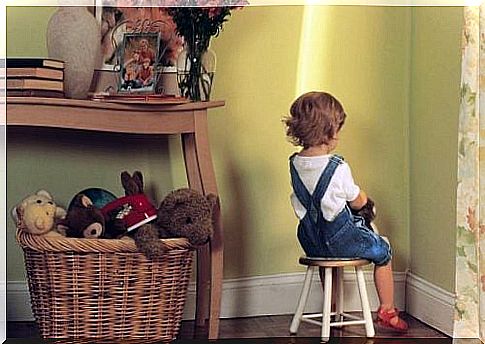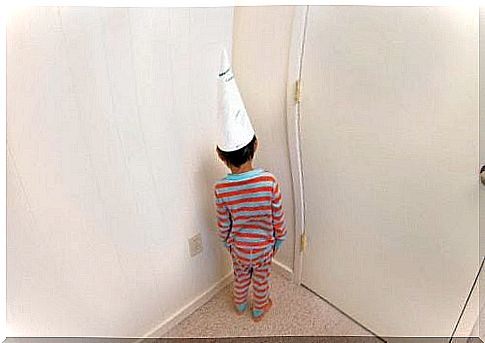There Are Alternatives To The Thinking Corner, Check It Out!

Although the thinking corner technique had been used before this program, it was seen as a severe punishment that had no other purpose than to make the child feel bad for something negative they did.
It is obvious that a child of one or two years of age will not reflect on very deep things.
When you tell her to think in the corner, the only thing she will understand is that when she does something wrong her parents don’t want her around. And that’s the result we’re least looking for.
It is possible for a child to understand that when he does something wrong, his parents instantly stop loving him.
This type of punishment, which consists of isolating the child, conveys a message of conditioned love: “I only love you if you behave well”. Furthermore, it results in the feeling of insecurity that it causes in the child.
Keep in mind that, in most cases, children do not have absolute control over their actions. Especially the younger ones.
This would be to punish them for something they really have no intention of doing and consequently will generate a frustration that completely shifts the focus from good behavior to just reacting to the injustice committed.
When the thinking corner works, it’s because your child wants your approval and love above all else.
Or also when he has some control over his actions. If he doesn’t have it yet, the corner won’t work at all.

love and the corner
Perhaps you are not comfortable using your love as a reward. As if it was something he had to earn instead of deserving just because he was born.
That love that is perennial, stable, eternal and invincible as it should be in a healthy relationship.
There is an alternative to this technique that allows the child to regain control, think about their behavior and look for alternatives. All based on your parents’ unconditional love.
the connecting corner
The connecting corner is based on recognizing when the child needs to regain control and get out of the situation they are in. Just like the thinking corner.
The difference is that, in this case, the children go to the connecting corner accompanied by their parents or another attachment figure.
This method can be understood in a similar way to the peace table, known in Montessori’s line of thought.
The difference is that the child goes to the peace table voluntarily and can choose whether to go alone or not.
In the connecting corner, it may be the adult who sees the need to use this space. In addition, the child will always be accompanied.

Another difference is that the peace table is usually a physical location. Generally, a table as its name suggests.
Other variants might be a drawer or shelf located in a quiet part of the house.
The “connecting corner”, in turn, is actually no specific place.
It was named after the corner of thinking. But it is by no means limited to any physical place.
The connecting corner can be a park bench, your bed, or your house’s garden. Or any other quiet place you feel is suitable.
The connect corner can be any place where you and the child do some activity together to help them calm down.
What types of activities can be done in the Connect Corner?
Whatever you want as long as they are activities that help the child regain control.
As a suggestion, you can tell stories, draw a picture, tear paper into small pieces, jump, scream, run very fast, breathe deeply, watch the leaves on trees, watch how your belly rises and falls when you breathe, hear your heartbeat. heart, drink water, eat something, etc.
Anyway, the range of possibilities is endless.
Once the child has calmed down and you see that he has regained control, you can talk to him about what happened.
Try to use neutral language, without accusing or victimizing. You can look together for alternatives to act differently in the future.
You can also try to get the child to come up with ways to correct what he did wrong. If that’s the case, of course.
Why is this option better than the corner of thinking?
Mainly because it is not based on the child’s isolation and disconnection from his or her attachment figure.
Second, because it actually provides tools for controlling emotions and reflecting on behavior.
All of this protecting, while strengthening the family bond.








